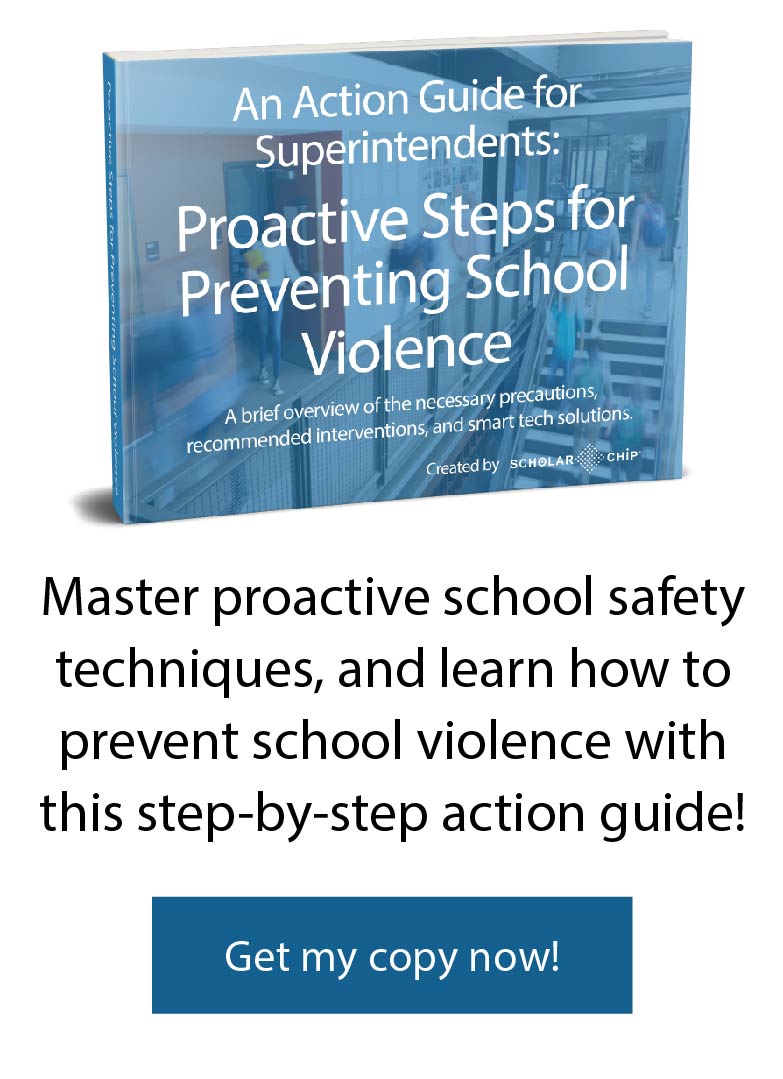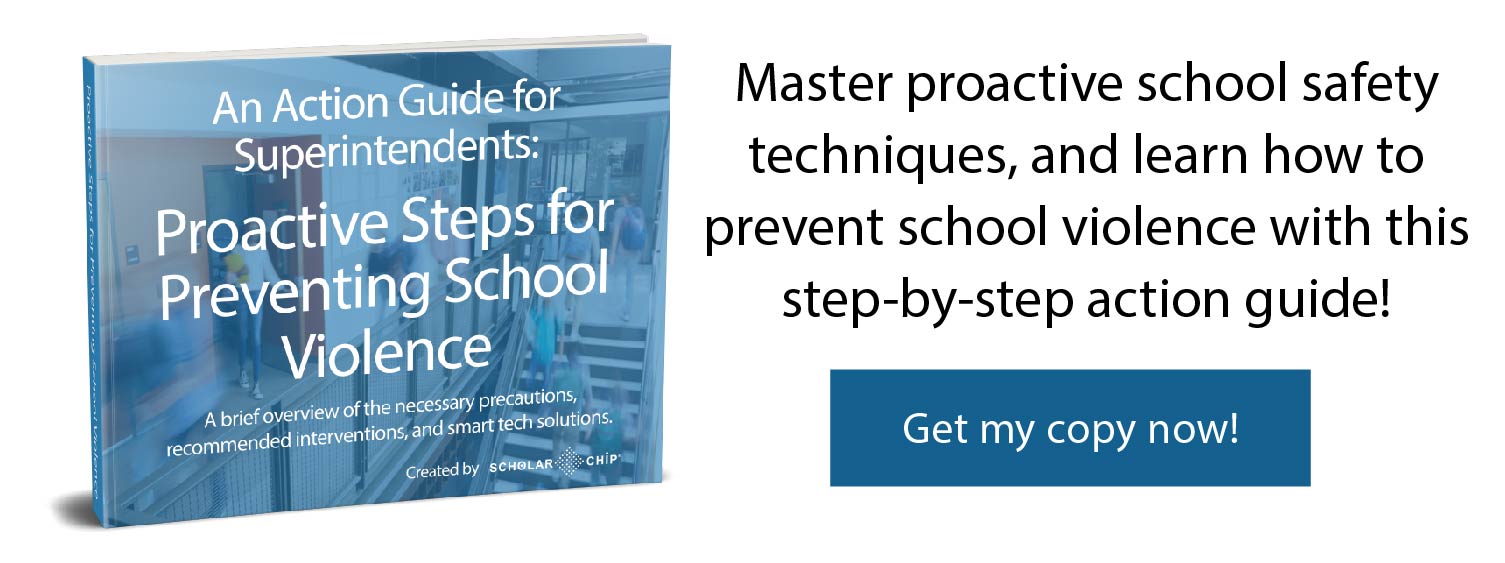When it comes to tackling school safety issues, schools are fighting a battle on two fronts, whether they realize it or not. The first, of course, is in the “real world.” Proactively protecting students and preventing violence within school grounds should be a top priority toward achieving proper school safety.
The second front is a tougher battle – perception. While statistics and reports may show a school to be safe, the perception of the students, parents, and community may run counter to that data. Students need more than to be safe in school, they need to feel the safety in a positive way.
One situation that can impact that perception is classroom behavior. When students act out in class, becoming verbally defiant or actively aggressive towards teachers or students, other students can become concerned for their safety. Once students begin to feel fear in the school environment, the effects can be detrimental and costly toward the school. Perceptions of others can change to match those students, including parents and the community. Plus, when students are fearful in school, their performance will most definitely suffer.
It’s important to acknowledge the needs of the students acting out. Aggressive and inappropriate behavior can be a signal toward deeper issues. School administrators have a responsibility to address student behavior not just for the security of other students and themselves, but to help children who may be experiencing violence or emotional issues themselves. To get these students the aid they need, schools must be able to identify their battle, before an issue becomes an incident.
Behavior issues and school violence: the connection
Depending on age, some students acting out is expected and normal in the classroom. The occasional disobedience, talking out of turn, and so forth are common occurrences in lower grades as students learn what is acceptable behavior in school.
These outbursts should stay within a typical set of actions and students should respond well to correction. As students get older, these behaviors should subside. However, if a student’s behavior frequently goes outside of normal, age-appropriate acting out, or continues into years where children should be beyond classroom outbursts, there may be larger issues at play.
When student behavior veers from normal to excessive or aggressive, it can be an early warning sign of future school violence. When children display uncontrolled anger, have consistent impulse control issues, bully, hit or intimidate other students, or continue to have a history of discipline problems, schools need to consider the need for interventions and additional support services. These kinds of student behaviors can be a signal that there are underlying problems the child is dealing with, from behavioral health issues to indications of experiencing violence in school, at home, or in the community.
Students may act out after having been the victim of violence themselves. These acts may come from anywhere in the child’s life. Students may also have outbursts or be aggressive in the classroom when they feel rejected or isolated from their peers. This, too, may come from their socioeconomic circumstances at home, or be a reaction to treatment by other students within the school. Student behaviors may also be the result of discipline problems or issues with drugs and alcohol.
Traditional methods of dealing with students that show aggression or impulsivity in the classroom ignore the child’s need for help. By addressing the underlying problems that may be causing the outbursts with support and special services can improve both the real and perceived level of safety in the school while also helping set the student on a better and more productive path to the future.
Improvement starts with identification
As mentioned, some student behaviors in the classroom are normal and expected, depending on age and situation. It is when these behaviors appear in a pattern or over a length of time, or the severity of the behaviors is significant, that school need to take action.
Identifying the appropriate time to recommend a student for additional services can be challenging. Different teachers have differing levels of tolerance for student behaviors and may not see issues in the same way. Educators need to be trained to recognize the difference between a student testing the boundaries of appropriate behavior and one that may be displaying emotional and behavioral challenges.
Once teachers are trained on what to look for, they need a means of consistently and clearly noting and tracking these issues. Without a systematic means of recording issues, tracking and providing behavior management activities can be difficult. Also, when these activities are done manually, such as in a grade book or teacher’s notes, there is a lack of visibility. This makes it difficult to note a pattern until an issue is significant.
Student behavioral issues may also develop over time. What might be a few minor outbursts one school year may continue or worsen into the next year. When data on behavioral issues is siloed by academic year, it slows a school’s reaction time and allows a student with greater support needs to go without for longer than needed.
Schools need a proactive solution that provides teachers a simple means of tracking, provides schools visibility across a student’s career and offers the ability to report on behavioral issues across time. This gives schools the information they need to provide support services to students in a timely manner while also improving the educational environment for all students.
How to get students the help they need
Understanding that a child needs additional support is one problem. Getting them the help they need is another.
Teachers are the first line of defense for these students. Without some level of clarity on how to address a student’s needs or for additional services, teachers need aid to students in a proactive way, that will also have a reward system in place. When a behavioral issue arises, teachers need help in trying to solve the issue.
Even with an understanding of the issue at hand, teachers may be overwhelmed or may put off the task. With a behavioral management system in place, like ScholarChip-ABE, not only is it easy for teachers to track student behavior, it’s simple to send referrals, monitor students, and provide a reward system once a student progresses.
An important element of school security and student performance is the perception of safety within the learning environment. When students have repeated their aggressive outbursts, whether in class or outside, it can erode that feeling of security in other students. Behavioral issues need to be addressed immediately, period.
By using a behavioral management system, like ScholarChip-ABE, schools can identify at-risk students through systematic and consistent tracking and simplify the referral and intervention process. These actions will help to promote a healthier school environment while ensuring students with needs for alternative services receive the help they need.
ScholarChip is an all-in-one solution that addresses a multitude of issues schools face in today’s world. With smart technology, attendance management, school safety and behavioral issues can be controlled in a proactive way.
If you would like to learn more about how you can prevent school violence and student behavioral issues, feel free to reach out to ScholarChip today for a free 1-on-1 strategy session with one of our solution specialists!


